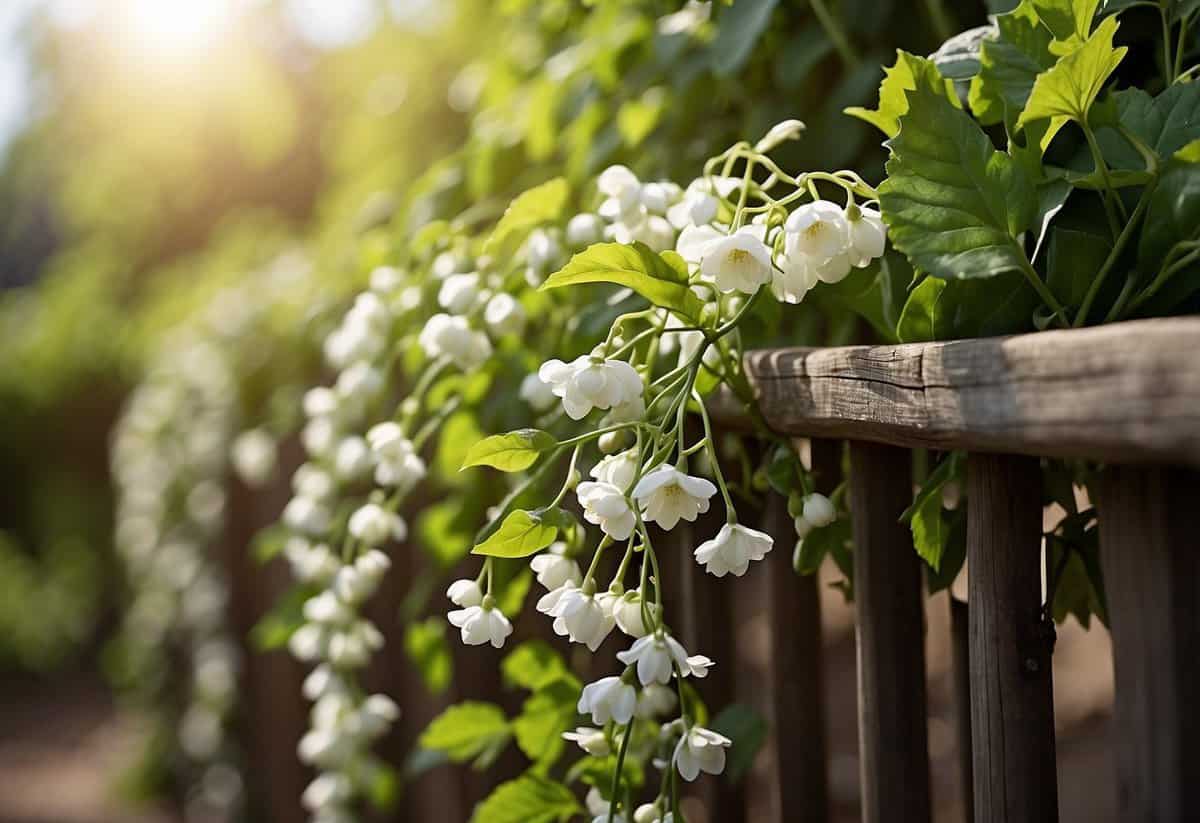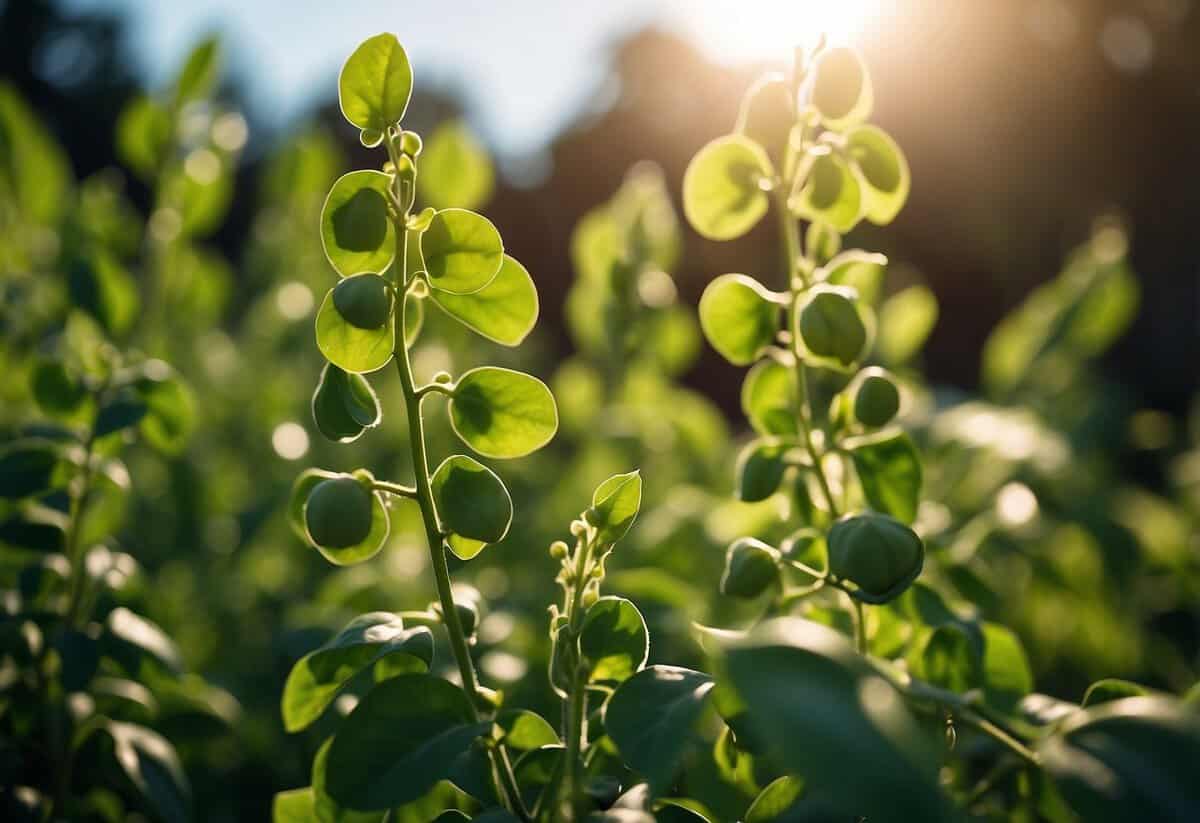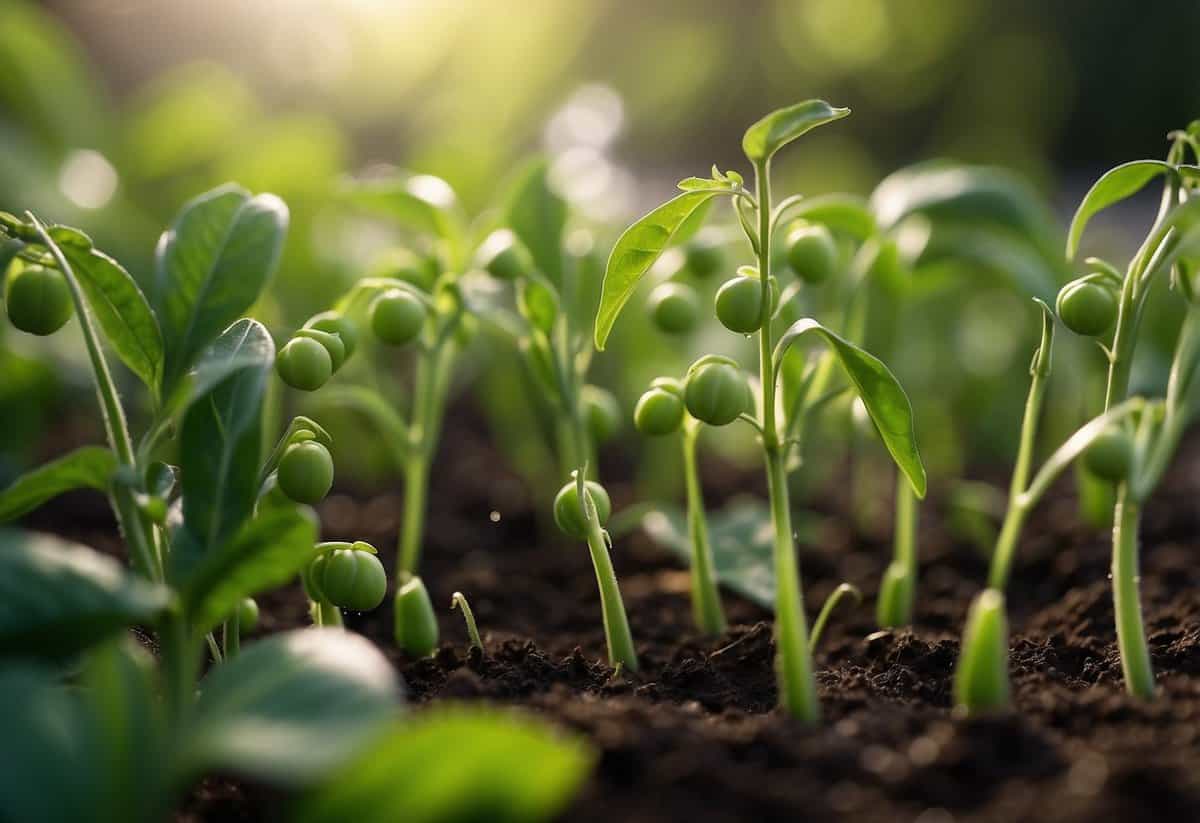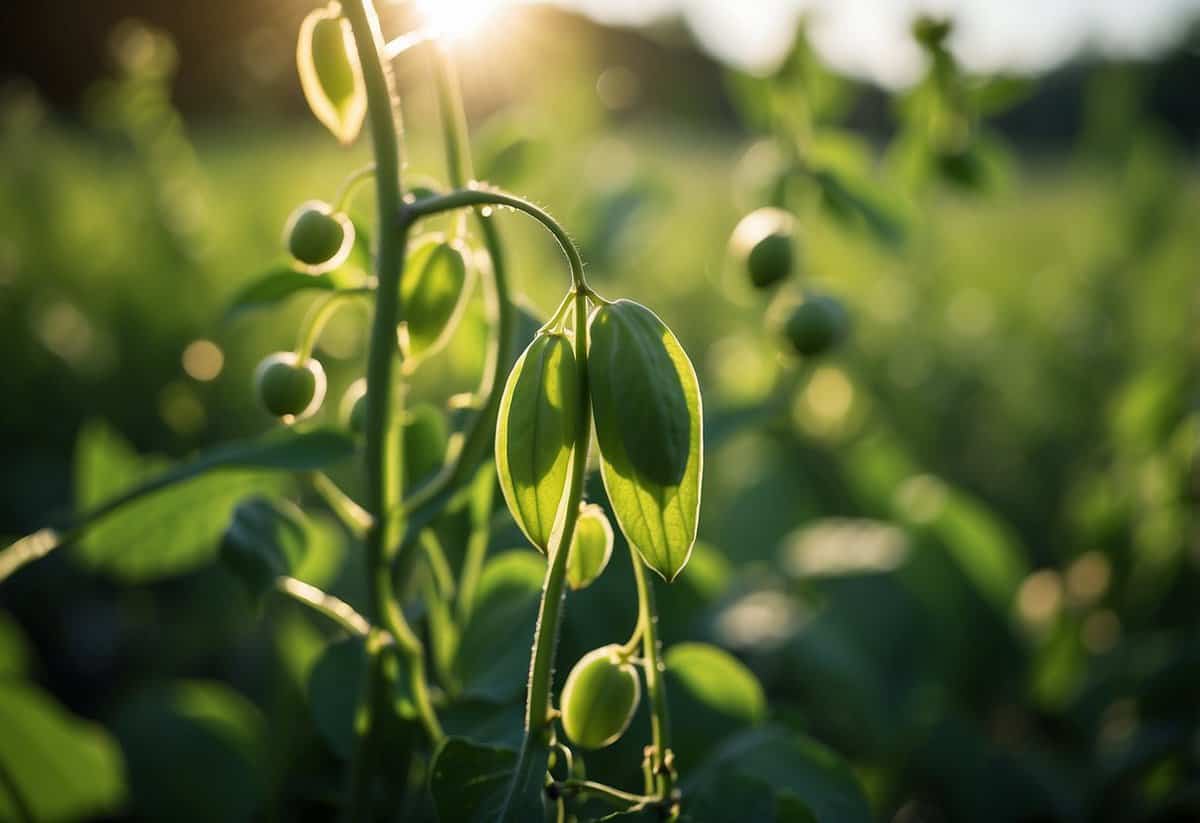Garden Pea Growing Tips: Easy Guide for a Bountiful Harvest
Growing your own garden peas can be a rewarding experience, whether you are a seasoned gardener or just starting out. Peas are a versatile and nutritious addition to any home garden. They are relatively easy to grow and can provide a bountiful harvest with some simple care and attention.

You’ll find that fresh peas from your garden taste much better than store-bought ones. This guide will share practical tips and tricks to help you achieve your best pea harvest. Get ready to enjoy the sweet, crisp flavor of homegrown peas right from your backyard.
1) Choose well-drained soil

Selecting the right soil is key for growing healthy garden peas. Aim for loamy, well-drained soil with a pH range of 6.0 to 7.5. Conduct a soil test to find out the pH and nutrient levels.
Amend the soil with organic matter like compost or aged manure. Avoid heavy clay soils as they can cause waterlogging, leading to root rot and poor growth. Sandy loam soil also works well as it provides good aeration and drains excess water efficiently. Mulching helps retain soil moisture during warmer weather.
2) Plant in Full Sun

Peas thrive best with plenty of sunlight. Aim for at least 6-8 hours of full sun each day.
Full sun helps plants grow stronger and produce more pods. If peas get too little light, they won’t be as sweet or productive.
Avoid planting peas in areas with too much shade. They can tolerate some dappled shade, but too much will affect growth. For more details, check out Epic Gardening.
3) Space seeds properly

When planting peas, it’s important to give them enough space to grow. Seeds should be spaced about 2 to 3 inches apart.
Once the plants start to grow, thin them out to about 4 inches apart. This helps each plant get enough nutrients and sunlight. Make sure to follow these guidelines to help your peas thrive.
4) Water regularly but lightly

Peas need regular watering to thrive. You should aim to keep the soil consistently moist. However, be careful not to overwater.
Water your pea plants lightly. Doing so helps prevent the soil from getting waterlogged. Too much water can lead to root diseases.
To retain moisture, consider adding mulch around your plants. Mulching also helps keep weeds down, which competes for nutrients. Your pea plants will appreciate the consistent care.
For more tips, visit this pea growing guide.
5) Use a trellis for support

Using a trellis can help your pea plants grow tall and healthy. You can easily create a trellis with 6-foot bamboo stakes and garden twine. Just position the stakes in the soil and weave the twine to make a grid for the peas to climb on.
Trellises can also be made using garden arches or tunnels. These not only support your peas but also add visual interest to your garden. If you have raised beds, consider using cattle panels to create sturdy tunnels between them.
Remember to tie your pea plants loosely to the trellis with twine or flexible plant ties. This prevents them from breaking as they grow taller.
6) Mulch to Retain Moisture

Mulching is a great way to keep your garden peas happy and healthy. It helps to retain soil moisture, which is crucial for strong pea growth.
Use organic mulch like straw or shredded leaves. This can help regulate soil temperature and keep the roots cool.
Mulch also suppresses weeds and prevents soil from drying out quickly. Apply it around your pea plants once they are about 6 inches tall for the best results.
7) Rotate crops annually

Rotating crops every year is key for keeping your garden healthy. By planting peas in a different spot each year, you can avoid issues with pests and diseases.
Switching the location of your garden peas also helps maintain soil nutrients. Different plants use and add different nutrients, keeping the soil balanced and fertile.
For best results, plan your garden in sections. One year, plant peas in one section, and rotate them to another section the next year. This simple practice will make a big difference in your pea harvest!
8) Control pests organically

You can control pests in your garden without using chemicals. Use garden forks to aerate the soil and keep it covered with mulch or living ground cover. This prevents erosion and deters weeds.
Aphids and weevils can be managed with insecticidal soap. To control slugs and snails, create physical barriers or traps. These methods help keep your garden peas safe and healthy.
For more details on dealing with pests like aphids and weevils, check out this guide.
9) Harvest When Pods Are Full

When growing garden peas, timing is key.
You should harvest peas when the pods are full and plump. Check them regularly, as peas grow fast and can become overripe quickly.
Full pods usually look bright and swollen. Pick them before they get too old and tough. Enjoy your fresh peas in salads or cooked dishes for the best flavor.
For more details on harvesting, visit Savvy Gardening.
10) Fertilize with compost

Using compost to fertilize your pea plants is a great way to give them the nutrients they need. Compost enriches the soil, promotes good drainage, and helps retain moisture.
Spread a layer of compost about 1-2 inches thick around your pea plants. Work it into the soil gently with a trowel or your fingers.
Applying compost not only feeds the peas but also improves soil structure. This helps the roots grow strong and healthy. Regular use of compost can lead to a bountiful pea harvest.
Understanding Garden Peas

Garden peas are a versatile and nutritious crop that you can enjoy fresh, frozen, or dried. They come in different types, and they thrive in specific growing conditions.
Types of Garden Peas
Shelling Peas (English Peas)
Shelling peas are the most common type. You grow them for the peas inside rather than the pods. The pods are inedible. Shelling peas are sweet and tender when fresh.
Snap Peas
Snap peas have edible pods and peas. They are sweet and crunchy, making them great for fresh eating or cooking. They are popular in stir-fries and salads.
Snow Peas
Snow peas, also known as Chinese pea pods, have flat, edible pods with small peas inside. They are often used in Asian cuisine. Snow peas can be eaten raw or cooked.
Ideal Growing Conditions
Temperature
Peas grow best in cool weather. They thrive in temperatures between 40°F and 80°F. They can handle brief periods of cold, down to 20°F, but extreme cold can affect growth.
Soil
Well-drained soil is crucial. Peas prefer slightly acidic to neutral soil (pH 6.0-7.5). Ensure your soil is rich in organic matter.
Watering
Peas need consistent moisture, especially when forming pods. Water them regularly but avoid waterlogged soil.
Sunlight
Peas need full sun for at least 6-8 hours a day. Good sunlight ensures healthy growth and better yield.
Support
Many garden peas grow as vines and need support. Use trellises or stakes to keep the plants upright and ensure good air circulation. This helps prevent disease and makes harvesting easier.
By choosing the right type and providing the correct conditions, you will have a bountiful garden pea harvest.
Planting Garden Peas

Planting garden peas starts with preparing the soil and follows with specific planting techniques to ensure optimal growth. Paying attention to these details helps maximize your pea harvest.
Preparing the Soil
Garden peas thrive in well-drained soil with a neutral pH between 6.0 and 7.5. Before planting, clear any weeds and work in compost to enrich the soil. This adds necessary nutrients and improves soil structure.
Test the soil pH using a home testing kit. If the pH is too low, add lime to raise it. If it’s too high, sulfur can help lower it. Peas also need good airflow and sunlight, so choose a location that gets at least six hours of sunlight per day. Moisture is important, but too much water can lead to root rot, so ensure good drainage.
Planting Techniques
Soak pea seeds in water for 12-24 hours before planting to speed up germination. Plant the seeds about 1 to 2 inches deep and space them 2 inches apart in rows. Snow peas can be planted slightly shallower at around 1 inch deep. Leave about 18-24 inches between rows to allow adequate space for the vines to grow.
You can use a trellis or other support system to help the plants climb and to keep the pods clean and easy to harvest. Water the seeds gently after planting and keep the soil consistently moist until the seedlings emerge. Mulch around the plants to retain moisture and suppress weeds.
Care and Maintenance

To grow healthy garden peas, it’s crucial to provide the right amount of water and protect them from pests. You’ll need to balance watering to keep the soil moist and take steps to prevent common insects from damaging your plants.
Watering Requirements
Peas require consistent moisture to thrive. Water your peas deeply once a week, especially during dry periods. Use a soaker hose or drip irrigation to avoid wetting the leaves, which can lead to fungal diseases. Mulching around the base of the plants helps retain soil moisture and keeps the roots cool.
During the flowering and pod development stages, increase the frequency of watering. Ensure that the soil stays uniformly moist. Avoid overwatering, as soggy soil can cause root rot. Additionally, watering in the morning allows the soil to dry out during the day, reducing the risk of disease.
Dealing with Pests
Common pests for garden peas include aphids, pea weevils, and spider mites. Regularly inspect your pea plants for signs of pests such as chewed leaves or tiny insects. Use insecticidal soap or neem oil to manage small infestations. You can also introduce beneficial insects like ladybugs to control aphids.
For pea weevils, consider using netting or floating row covers to prevent the insects from laying eggs on the plants. Maintaining good garden hygiene by removing debris and dead plants can also discourage pests. If you see signs of spider mites, increase humidity around the plants by misting them with water and ensure proper spacing to promote air circulation.







